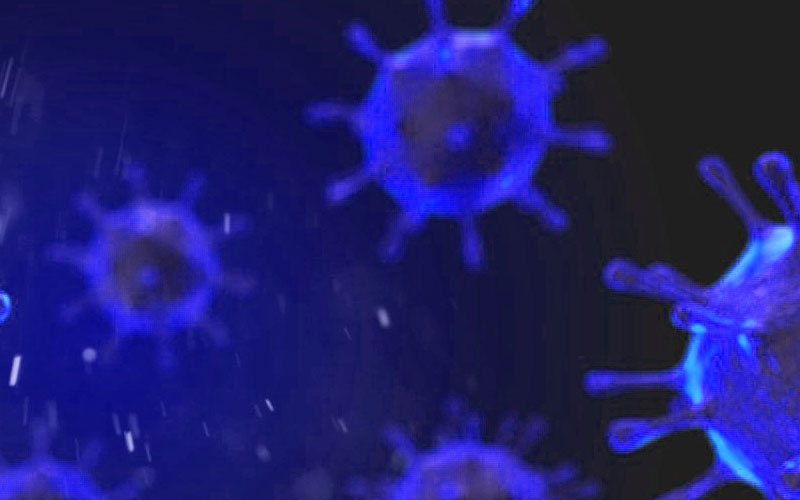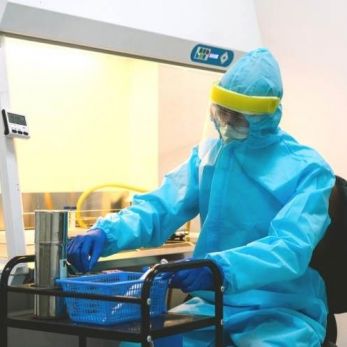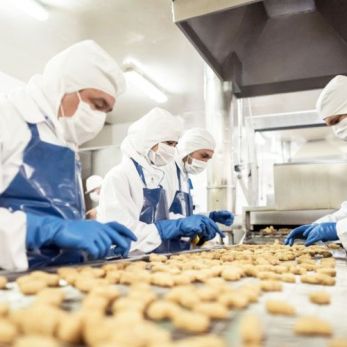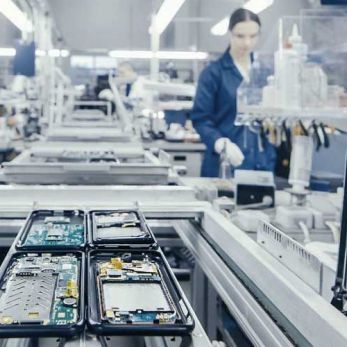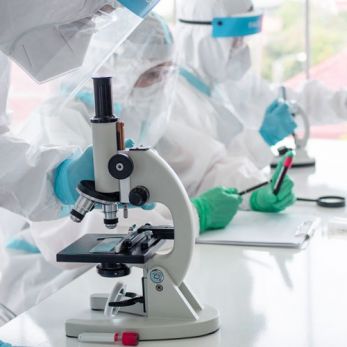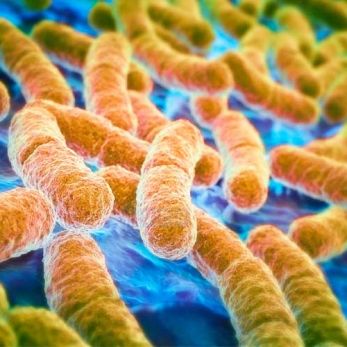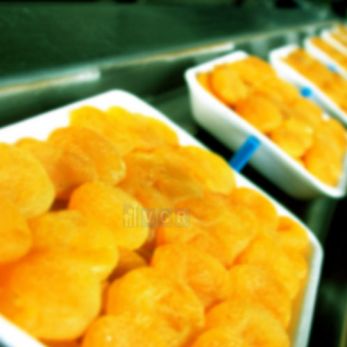Vaccine cleanroom design
Rapidly spreading infectious diseases are always a danger to watch out for, we can see it through the Covid 19 epidemic. That's why daily vaccine developers are increasingly having to disrupt limits to providing a variety of treatments that safely,
Rapidly spreading infectious diseases are always a danger to watch out for, we can see it through the Covid 19 epidemic. That's why daily vaccine developers are increasingly having to disrupt limits to providing a variety of treatments that safely, effectively and consistently stimulate and protect the human immune system.
However, we will not talk so much here about vaccines and their effects, but how to create an environment for the production of vaccines. Therefore, let's learn about the considerations when designing vaccine cleanrooms and vaccine production facilities.
Vaccines and its development stages
What is a vaccine?
A vaccine is a biological preparation that provides active acquired immunity to a specific infectious disease. Vaccines typically contain a pathogen-like agent and are usually made from a form of the microorganism, a toxin, or one of its surface proteins, which has been weakened or killed.
This agent stimulates the body's immune system, which, after treating the agent as a threat, destroys it and will continue to recognize and destroy any microorganisms associated with the agent. that it may encounter in the future. Vaccines can be prophylactic (to prevent or ameliorate the effects of a future infection by a "wild" pathogen in the wild), or curative (to protect against a disease that occurs in the wild). have occurred, such as cancer).
Vaccine development stages
The first development phase is the discovery phase that includes initial research, where scientists or researchers identify an antigen that can help prevent or treat a disease. Once the antigen is identified, the next step is the preclinical phase.
In the preclinical phase, scientists use tissue or cell culture systems along with animal testing to assess the safety of potential vaccines. Once completed, a vaccine developer will request an Investigative New Drug Application from the FDA (USA) and other relevant organizations. From here, the potential vaccine begins to enter the clinical development stage.
The clinical development phase consists of three phases that involve the evaluation of a candidate human vaccine with the goal of safety and the determination of the type and extent of the immune response. Some of the tests in these phases include dosage, schedule, method of delivery, and immunogenicity. Test groups will start small and will build in subsequent phases.
After Phase 3 is successful, the vaccine developer will submit a Biologics License Application to the FDA and other relevant organizations, where the vaccine will be reviewed and tested to see if the vaccine meets the requirements. their specifications or not. Some of these tests include:
Identity check
Purity test
Microbiological test
Check for sterility
Once approved, the vaccine will move into production and a quality control system will be established.
Some considerations before designing a vaccine production facility
Like any other pharmaceutical or biotech manufacturing environment, vaccine production also requires dedicated cleanroom areas. And the production of biological drugs will present major challenges for cleanroom design.
Notes when designing vaccine production facilities
All phases of vaccine research and production require a clean room to provide the best working environment. Temperature, humidity, airflow, air pressure (positive or negative depending on the BSL level), and other environmental requirements are mandatory requirements that must be met to safely deliver vaccines without there is any risk of contamination.
And here are some things to keep in mind when setting up a vaccine production facility or biological product production facility:
Type of vaccine or manufacturing ingredient
The biosafety level (BSL) depends on the vaccine or viral vector used
Workflow templates
ISO classification / GMP requirements for vaccine cleanroom
Process phase (R&D, preclinical and clinical stages, large-scale production)
Size, equipment inside the room, number of people working inside
Vaccine production capacity / expected number of doses produced
Base expansion
Standard utilities (plumbing, electricity, process gas, etc.)
Consider a typical vaccine cleanroom design
Vaccine cleanrooms are purpose-built environments customized to a rigorous process. While each vaccine cleanroom will have a different approach, there are common cleanroom considerations for technology applications and platforms.
Considerations when designing a vaccine cleanroom
MAL (Material Airlocks) / PAL (Personnel Airlocks)
Interlock door models and personnel flow
Clean room pressure
Device configuration and installation process
Configure HVAC and Airflow Separation
Dispensing Booth or LAF
Return airflow design
Distribution process
Control the environment
ISO classification, temperature and humidity
View, monitor, security camera
Leveling and cleaning protocol
Some notes and experiences for the vaccine base system.
N + 1 backup utility
Biological reactor
Handles utility boards & distribution hooks
Create and distribute WFI (Water for Injection)
VHP (Vapour Hydrogen Peroxide)
BMS (Building Management System) and door interlock
Environmental monitoring equipment (particle counters exist and are non-viable)
Analytical equipment
Design and layout of vaccine production facilities
See also: Aseptic pharmaceutical clean room
Design and layout of vaccine production facilities
Cleanroom dressing room / Incubation area:
Like any other cleanroom environment, a vaccine production facility will need an incubation area to eliminate the risk of contamination. It is necessary to use multiple Air Lock in the design, Air lock for materials (MAL) and Air Lock for personnel (PAL).
Production of cell cultures:
This is where cells, tissues, or organs are removed from animals or plants and placed in an artificial medium to promote growth. The ideal cell culture cleanroom is an isolated area, as you can see in the layout above. Cleanroom size is affected by the number and size of bioreactors or cell culture fermenters. Typical bioremediation capacities are from 50 to 2,000 liters and even more.
Vaccine production:
This is the cleanroom area of the vaccine production facility, where the virus is used to harvest and inactivate the pathogens within it. Let's say, you are producing vaccines with viral vectors, depending on the virus strain; you will need to think about biosafety level (BSL) and current GMP requirements in vaccine plant design and layout. BSL levels will affect the HVAC system and vaccine facility design, as cleanrooms may require negative pressure for BSL-3 and BSL-4. The cleanroom cleanliness class classification for these vaccination operations is usually Class C (ISO7).
Vaccine purification:
Vaccine purification is one of the most difficult tasks as it often requires multiple purification and cleaning steps. However, current technological advances can speed up this process. And vaccine manufacturing facilities will need gas chromatograph equipment for this step.
Vaccine formulation, in which adjuvants, stabilizers, and preservatives are added to the vaccine, will take place in this clean room. Environmental monitoring is also something to consider during the design/layout process.
Aseptic filling/finishing:
The vaccine production facility should include a specific area for aseptic filling and finishing for the sterilization and packaging of newly manufactured vaccines. The sterile cleanroom is an important area of the facility for ensuring the safety of vaccines inside vials and syringes.
In this area, the HVAC will be designed and operated to protect the sterile core using positive pressure. A biosafety cabinet or Laminar Air Flow System is required to create an ISO 5 (Grade A) area for critical filling operations, with an ISO 8 (Grade D) cleanroom background.
Labeling and packing:
Although the area does not need to be subject to a specific cleanliness level, it is nevertheless an important part of the vaccine production facility design. We need to first make sure that the right vaccine is in the right vial with the correct label. Clean room grade (CNC - Clean Non-Classified) or unclassified (UNC - Unclassified) should follow WHO guidelines, depending on whether vaccine capping is done or not.
Usually, capping will be done in an earlier stage of vaccine production. The vaccine factory will need packaging machines, vial labeling, and cold storage equipment such as freezers (newer vaccines need to be kept at -70°C / -94°F).
Quality control kit (QC & QA):
A quality control kit is essential to check the potency of vaccines being produced. Living organisms and biological drugs are much more complex than chemical drugs. The response of the living organisms inside the vials can vary from batch to batch, and that's why they need to be checked carefully. In an open area, the quality control laboratory should have a Class A cleanroom on a Class B platform. In a separate and dedicated QC laboratory, an isolation area on a Class D platform will be used.


